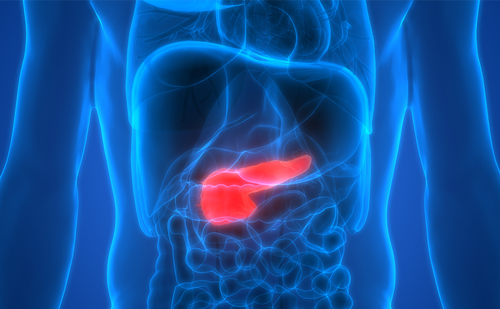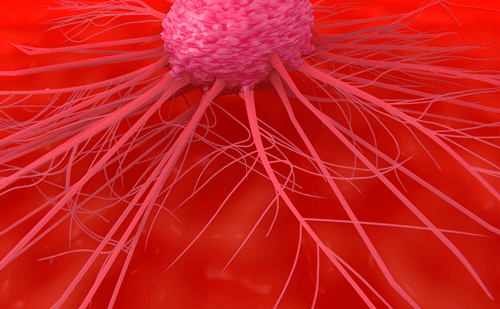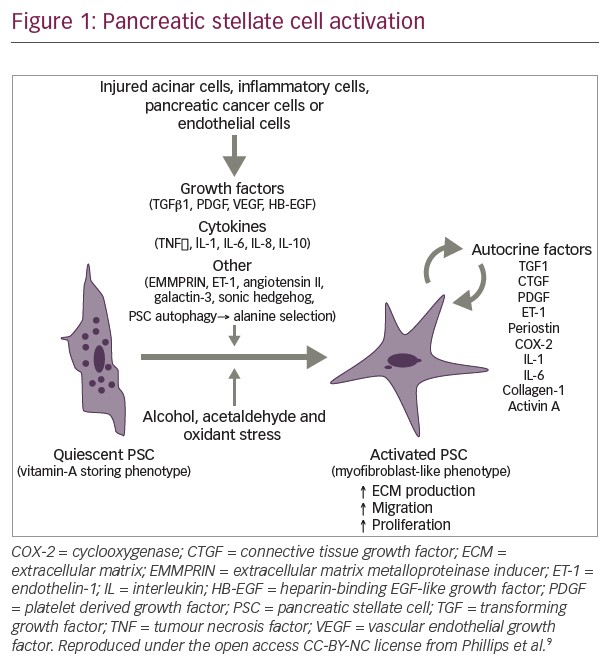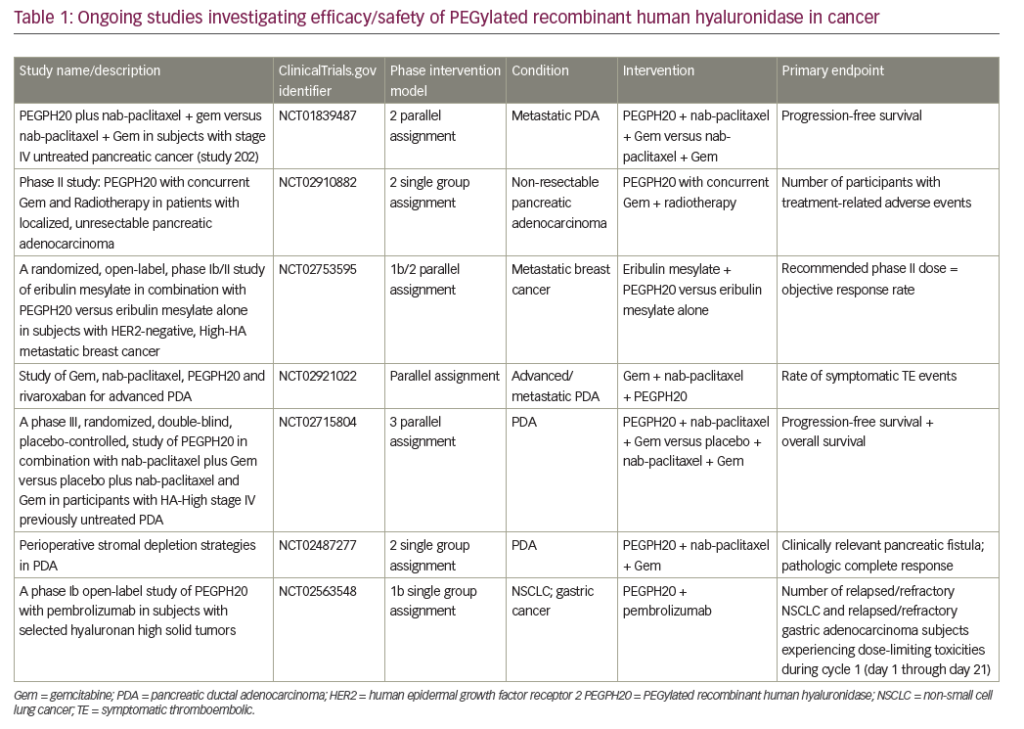Smoking appears to be consistently identified as a modifiable risk factor, with about 30% of all pancreas cancer diagnosis linked it. Chronic pancreatitis is associated with 10–15 fold increase in the risk of developing pancreas cancer. Hereditary pancreatitis and other familial syndromes involving the pancreas lend themselves to a 50–70 fold increase in pancreatic cancer. Other risk factors in the development of pancreatic cancer remain controversial. Thus, the role of cancer prevention is currently limited to education regarding tobacco use.
Diagnosis and Staging
In the last decade, significant advances have been achieved in the imaging and staging of pancreas cancer. The principal staging modalities include a helical computed tomography (CT) scan and endoscopic ultrasound. Standard magnetic resonance imaging (MRI) is less accurate for identifying vessel disease compared to CT, although magnetic resonance cholangiopancreatography (MRCP) has proven to be superior to CT, endoscopic retrograde cholangiopancreatograph (ERCP) or US in determining extrahepatic spread, lymph node and vascular invasion. Laparoscopy may reveal small (<1cm) peritoneal or liver metastases that cannot be seen by standard imaging modalities, and upstage approximately 10–40% of all patients depending on the location of their mass.
Staging of pancreatic cancer is based on tumour-nodemetastasis (TNM) criteria that apply to both pathologic and clinical staging at the same time, given the very small percentage of patients undergoing surgical resection. Stage I cancers are confined to the pancreas itself. Stage II disease may extend beyond the pancreas but involves neither the celiac axis nor the superior mesenteric artery. Stage I and II represent localized resectable cancer.When the mass involves the celiac axis or the superior mesenteric artery, the patient has stage III cancer or locally advanced disease. Finally, stage IV represents patients with metastatic disease.
CA19–9 is the best available tumor marker for pancreas cancer, and is approximately elevated in 80% of patients with pancreas cancer. Serum levels above 750U/ml are associated with a high probability of locally advanced or metastatic disease. Ca 19–9 should only be used to support the diagnosis and staging of pancreas cancer and to help monitor for recurrence or response to treatment. Localized Disease
Patients with resectable disease represent less than 10% of all pancreas cancer patients. The mainstay in managing localized pancreatic cancer is surgical resection with curative intent.Various radical pancreas cancer resection procedures include pancreaticoduodenectomy (Whipple procedure), distal pancreatectomy and total pancreatectomy. The Whipple procedure remains the most common surgical technique performed in patients with tumors of the head, neck and uncinate process with a reported five–year survival rate of approximately 15%. Distal pancreatectomy is indicated for patients with tumors of the body and tail with a reported five–year survival of less than 15%.There is strong evidence suggesting that surgical outcomes including mortality rate and three–year survival improve at centers designated as high volume. Birkmeyer et al. looked at 10,507 US patients with resected pancreas cancer and found the following: very low volume hospitals where there is less than one procedure performed per year had a reported 16.2% mortality rate and a 25% three–year survival in contrast to those high volume hospitals with more than 16 procedures performed a year had a reported 3.9% mortality rate (MR) and a 37% three–year survival. Low and moderate volume hospitals had intermediate mortality and three–year survival rates. More recently, McPhee et al confirmed the improved outcome of patients referred to high volume centers. Overall, the hospital mortality from pancreatic resection for neoplastic resection has decreased significantly from 1998 to 2003.This is thought to be related to multiple factors including increasing percentage of resections done at high volume hospitals, improved perioperative care and better patient selection.
The role of adjuvant therapy is continuously being redefined. An initial analysis of 100,313 US patients with pancreas cancer in the National Cancer Database revealed that 9044 patients (9%) had a pancreatectomy with only about 40% receiving adjuvant therapy (6.5% radiation alone, 5.1% chemotherapy alone, and 28.3% chemoradiation). The five-year survival was as follow: 23.3% for the observation arm alone with the best survival at five years with and the other arms ranging between 13–17% .However, numerous studies for the last three decades have established the role of adjuvant therapy by consistently showing an advantage to therapy versus observation alone. Nonetheless , there is no universal accepted standard approach to date with current options including combined modality therapy in the US, and in chemotherapy alone in Europe.
The Role of Chemoradiation
Evidence suggests that combining 5–fluorouracil (5FU) to radiation may enhance its response and consequently improve local control. In the late 1980s, (Cancer 59: 2006–2010, 1987) (26) the Gastrointestinal Study Group (GITSG) published the results of a study comparing adjuvant chemotherapy ( bolus 5FU) and split-course radiation followed by two years of maintenance bolus 5FU to observation alone. This randomized study was terminated early because of low accrual (30 patients) and a large survival difference between both arms favoring the treatment arm (median survival 20 and 11 months, respectively). Following the results of this study, adjuvant chemoradiation became the standard of care in the US. In contrast, the European Organization for the Treatment of Cancer (EORTC) looking at split dose radiation combined to infusional 5FU without followup chemotherapy to observation alone, failed to show a significant difference in survival between both arms. More recently, the results of RTOG 9704 comparing the effects of infusional 5FU versus gemcitabine before and after chemoradiation (with 5FU used as a radiosensitizer) were presented at the ASCO 2006 meeting.There was no difference in the median overall survival between both groups as reported on this study. However, when looking at pancreatic head tumors only, gemcitabine was found to have a survival benefit (20.6 months vs. 16.9 months, p = 0.033).The median disease free survival for both groups approximated 12 months in pancreatic head tumors.The Role of Chemotherapy
Two of the first studies looking at the role of adjuvant chemotherapy showed no advantage of 5FU in combination with mitomycin C with or without the addition of doxorubicin versus observation alone. Most recently the CONKO-001 trial was presented at ASCO 2005 showing the most convincing evidence for the use of adjuvant therapy over observation alone. This European trial was a very well powered randomized study looking at six months of standard gemcitabine therapy versus observation alone. The study showed a statistically significant disease free survival advantage of 14.21 months in the gemcitabine arm compared to only 7.46 in the observation arm. Survival analysis is still under way with a definite trend favoring the chemotherapy arm.All patients, whether they were N0 or N1, R0 or R1, seem to have benefited significantly from gemcitabine in the adjuvant setting.
Chemotherapy vs. Chemoradiation
The European Study Group for Pancreatic Cancer-1 (ESPAC-1) trial tried to address this question. This large multicenter study had a 2 X 2 factorial with four randomization schemes including an observation, a chemoradiation, a chemotherapy alone and a chemoradiation followed by chemotherapy arms. Because of the small sample size in each group, the final analysis included two options: Chemoradiation vs. no chemoradiation; and chemotherapy vs. no chemotherapy. The results of this large trial showed a significant impact on median survival of the chemotherapy alone group compared to no chemotherapy (20.1 vs. 15.5; p= 0.009).The two- and five-year survival for the chemotherapy versus no chemotherapy were estimated at 40% and 21%, and 30% and 8%, respectively. In contrast to that, no benefit was seen in the chemoradiotherapy arm, that did even worse than the no-chemoradiotherapy arm (median survival, 15.9 vs. 17.9 months; p= 0.05).The two- and five-year survival for the chemoradiation versus no chemoradiation were estimated at 29% and 10%, and 41% and 20%, respectively.










